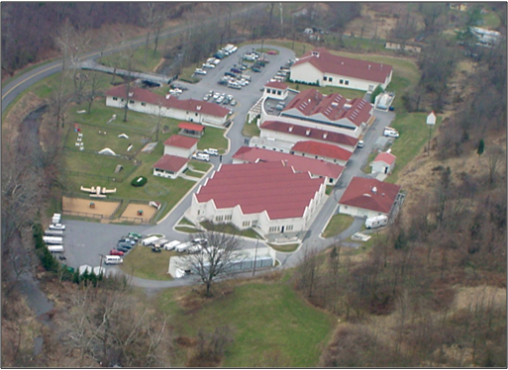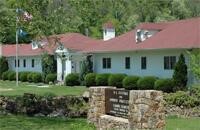FIRST DAY AT CETC 1973 – FORMER ARMY REMOUNT STATION
 |
 |
 |
|
|
CETC 2004
|
CETC 2004 |
Canine Center Front Royal
During the latter part of 1969, the former U.S. Customs Service carried out a study to determine the feasibility of using detector canines in the fight against drug smuggling. As a result, canine trainers from various branches of the U.S. military were recruited, and on April 1, 1970, the U.S. Customs narcotic detector dog training program was established at the Lackland Air Force Base in San Antonio, Texas. Initially, efforts were concentrated on training dogs to detect the odors of marijuana and hashish, but the immediate success, combined with the ever increasing smuggling of narcotics, would make the detection of heroin and cocaine equally critical in the war on drugs.
In July 1974, the detector dog training operation was relocated from San Antonio to its current location 70 miles west of Washington, D.C. in the town of Front Royal, Virginia. There, in the middle of the Shenandoah River Valley, sits 300 acres of property formerly used as a beef cattle research facility, and prior to that, functioned as a U.S. Cavalry remount station. The facility originally consisted of several hay barns, cattle stalls, large pastures, and wooded areas which would all slowly be renovated into administrative offices, classrooms, and kennels. In 1991, Congress approved funding for the facility improvement plan and in 1993, the construction of a new 100-run kennel, academic building, small arms firing range, and vehicle training areas were completed. These new additions brought the detection program facility up to date as it continued to produce canines trained in disciplines such as pedestrian processing, and detecting the odors of narcotics, currency, firearms, and explosives.
On March 1, 2003, the Department of Homeland Security was formed and effectually combined the canine resources of the former U.S. Customs Service (now the Office of Field Operations – OFO), U.S. Border Patrol (USBP), U.S. Immigration and Naturalization Service (INS) and the Animal Plant Health Inspection Service of the U.S. Department of Agriculture (USDA), all under one new agency, U.S. Customs and Border Protection (CBP).
CBP took the best practices from the OFO and USBP canine programs, each rich with history, tradition, and success, and combined them into one standardized curriculum containing identical training philosophies and methodologies geared toward individual agency operational requirements. This compatibility strengthened CBP’s ability to effectively deploy manpower to meet operational requirements regardless of mission and/or operational component; in effect, multiplying CBP’s canine force through unification.
In October of 2009, the unified CBP Canine Program was instituted with two training delivery sites, the Canine Center Front Royal (CCFR), formerly OFO’s Canine Enforcement Training Center, and the Canine Center El Paso (CCEP), formerly USBP’s National Canine Facility.
CCFR possesses a unified training cadre consisting of OFO and USBP personnel who deliver training to integrated classes made up of OFO and USBP students from throughout CBP. These new canine teams continue to be trained in disciplines such as concealed human detection, pedestrian processing and detecting the odors of narcotics, currency, and firearms.
Today, the training staff at CCFR produces some of the best detection canines, certified canine instructors, and canine handlers in the world. CCFR employees continue a proud legacy, which began so long ago in the Shenandoah Valley, training canine teams in various disciplines, for multiple law enforcement agencies and foreign governments, with the capability of being deployed into a myriad of environments in support of CBP’s global mission; protecting the United States from those that would do her harm.

